Step-By-Step: Setting up Active Directory in Windows Server 2016
There are interesting new features now made available in Windows Server 2016 such as time based group membership, privileged access management, and others. Most will be covered in future posts. This post will detail how to install active directory on Windows Server 2016.
Before the AD install however it is important to understand what is the minimum requirement to install windows server 2016. Details are as follows:
Processor
• 1.4 GHz 64-bit processor
• Compatible with x64 instruction set
• Supports NX and DEP
• Supports CMPXCHG16b, LAHF/SAHF, and PrefetchW
• Supports Second Level Address Translation (EPT or NPT)
Coreinfo is a tool you can use to confirm which of these capabilities you CPU has.
RAM
• 512 MB (2 GB for Server with Desktop Experience installation option)
• ECC (Error Correcting Code) type or similar technology
Storage controller and disk space requirements
Computers that run Windows Server 2016 must include a storage adapter that is compliant with the PCI Express architecture specification. Persistent storage devices on servers classified as hard disk drives must not be PATA. Windows Server 2016 does not allow ATA/PATA/IDE/EIDE for boot, page, or data drives.
The following are the estimated minimum disk space requirements for the system partition.
Minimum: 32 GB
Network adapter requirements
Minimum:
• An Ethernet adapter capable of at least gigabit throughput
• Compliant with the PCI Express architecture specification.
• Supports Pre-boot Execution Environment (PXE).
A network adapter that supports network debugging (KDNet) is useful, but not a requirement.
So in my demo I am using a virtual server with windows server 2016 datacenter. In order to setup active directory we need to log in as local administrator. First thing to check is IP address configuration.
1) Once Active directory setup on the server, it also going to act as DNS server. There for change the DNS settings in network interface and set the server IP address (or local host IP 127.0.0.1) as the primary DNS server.
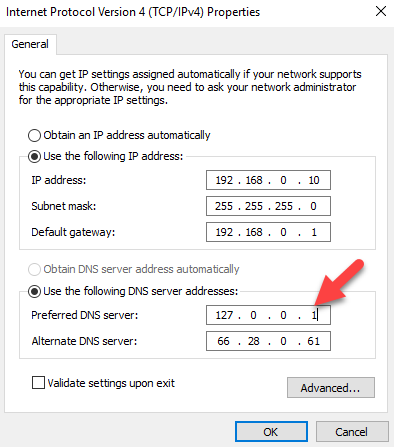
2) Then open the server manager. Go to PowerShell (as administrator) and type ServerManager.exe and press enter.

3) Then on server manager click on add roles and features

4) Then it opens the add roles and features wizard. Click on next to proceed.
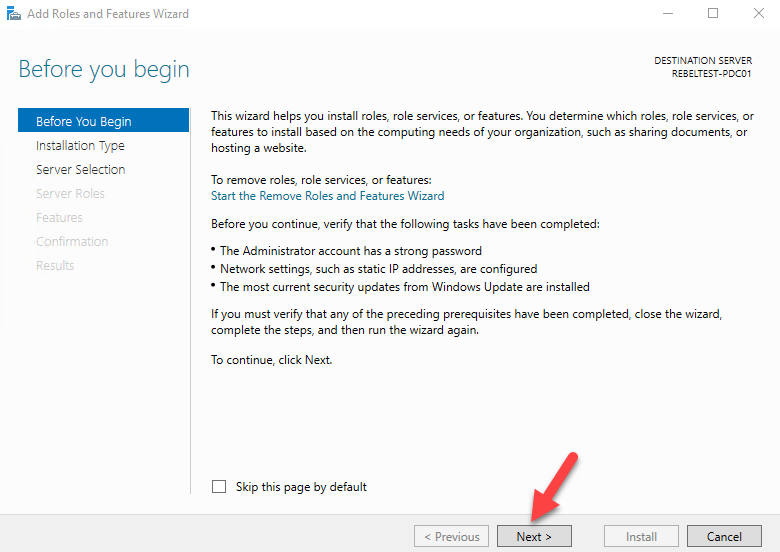
5) Then in next window keep the default and click next
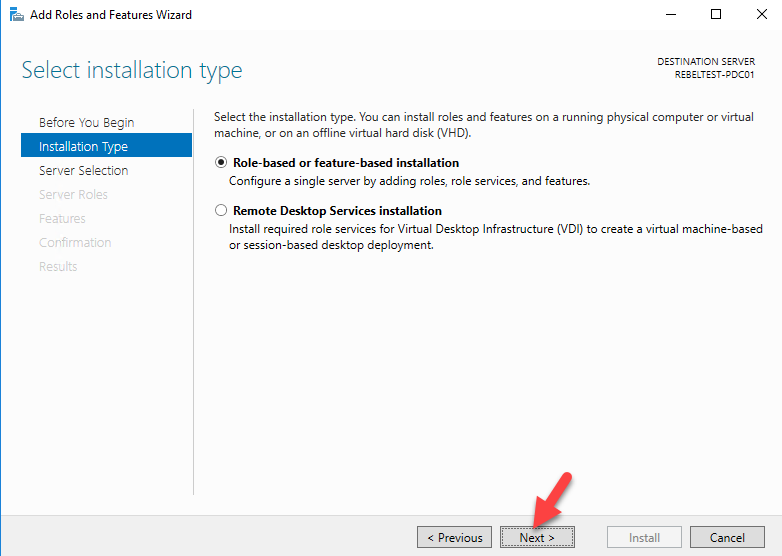
6) Since its going to be local server, in next window keep the default selection.
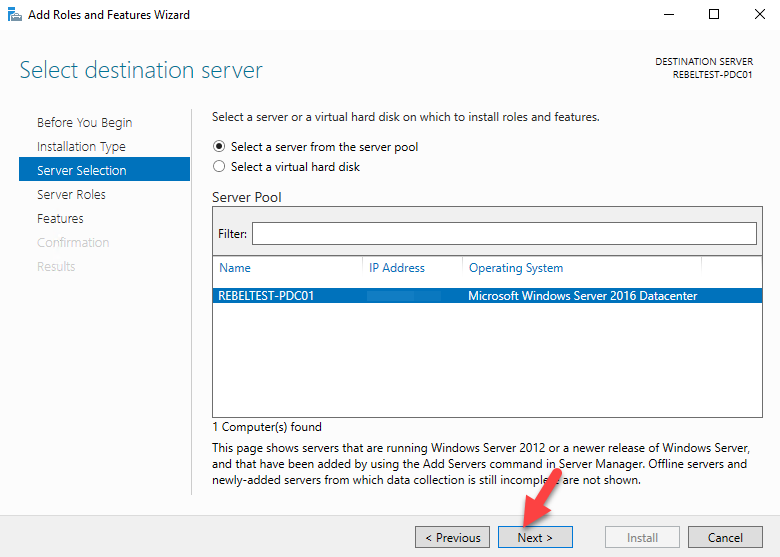
7) In next window from the roles put tick box for active directory domain services. Then it will prompt to show you what are the associated features for the role. Click on add features to add those. Then click next to continue.
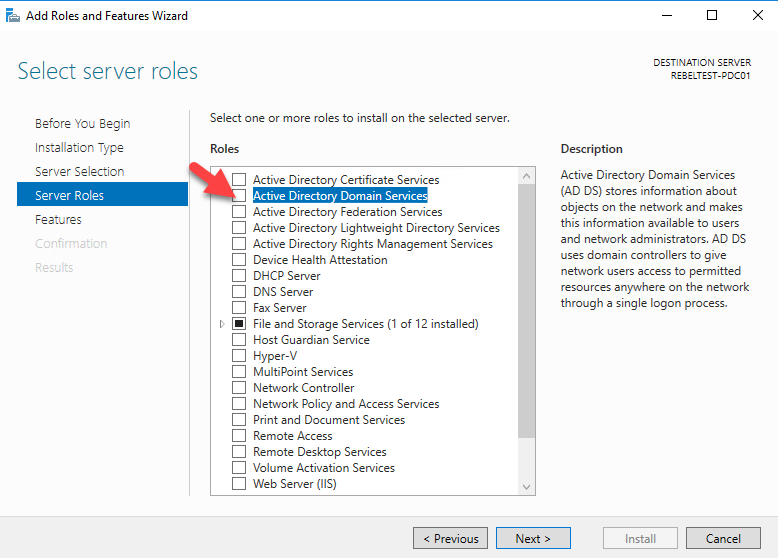
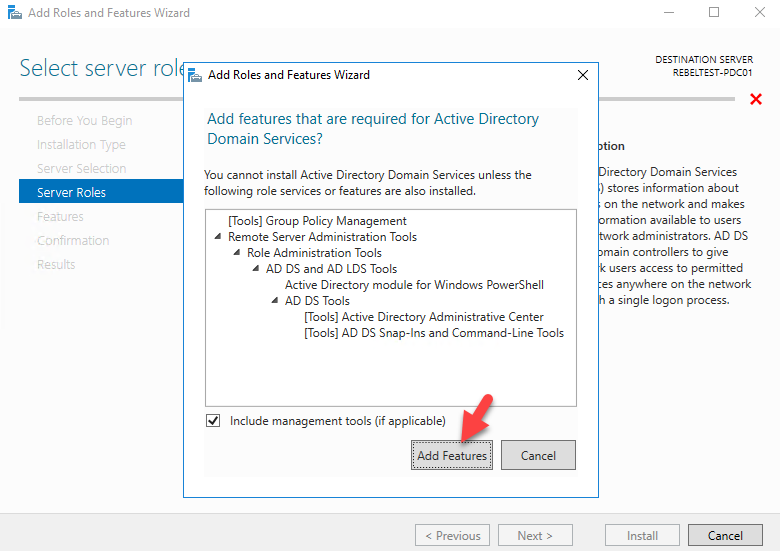
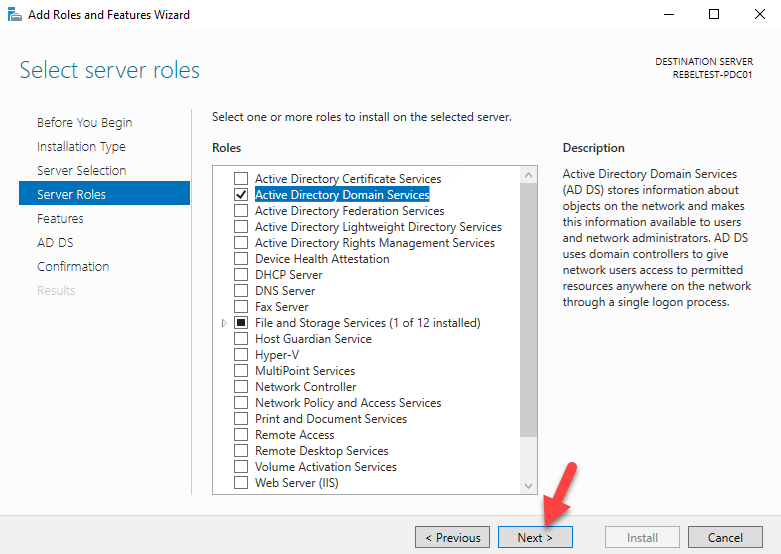
8) The features page, keep it default and click on next to proceed.
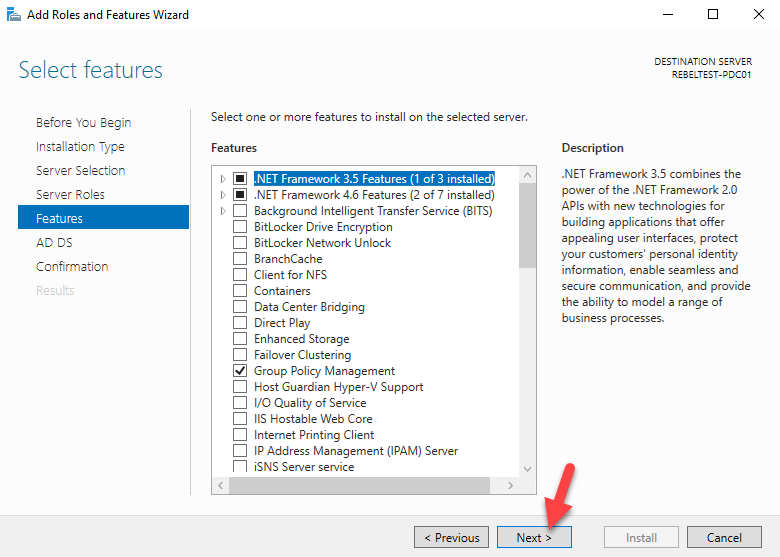
9) In next windows it gives brief description about AD DS service. Click next to proceed.
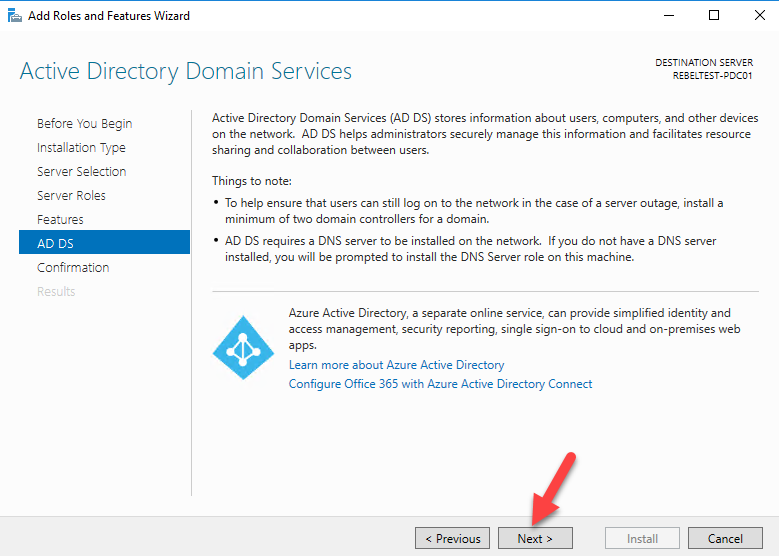
10) Then it will give the confirmation about install, click on install to start the role installation process.
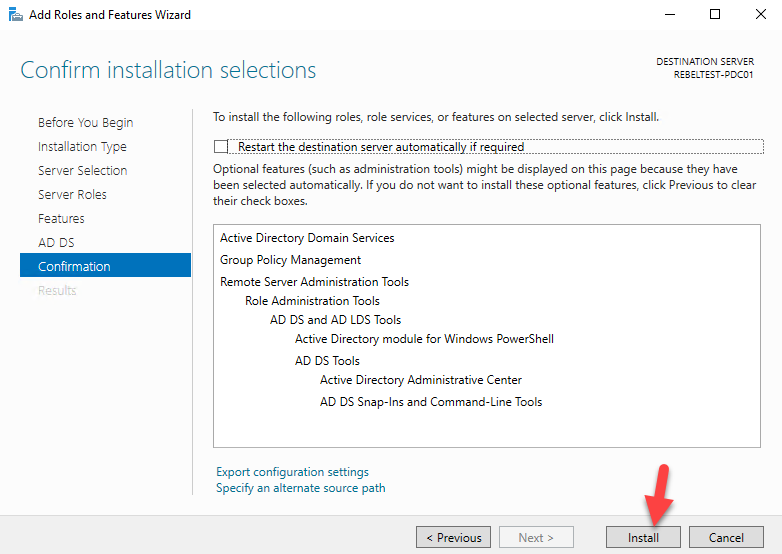
11) Once done, it will start the installation process
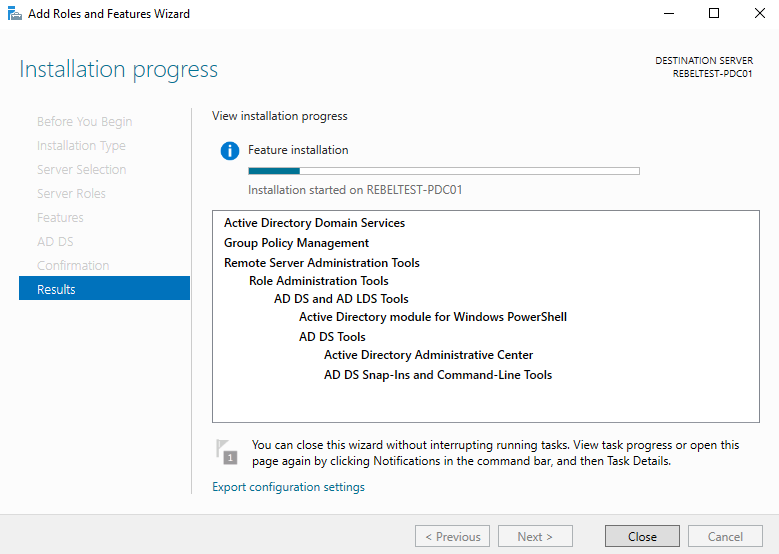
12) Once installation completes, click on option promote this server to a domain controller.

13) Then it will open the active directory configuration wizard. In my demo I am going to setup new forest. But if you adding this to existing domain you can choose relevant option. (I am going to write separate article to cover how you can upgrade from older version of Active Directory). Select the option to add new forest and type FQDN for the domain. Then click next.
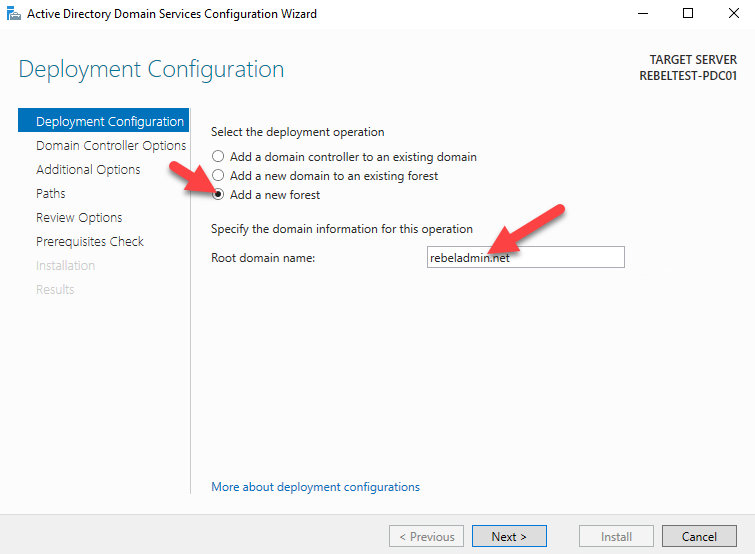
14) In next page you can select the domain and forest functional levels. I am going to set it up with latest. Then type a password for DSRM. Then click next
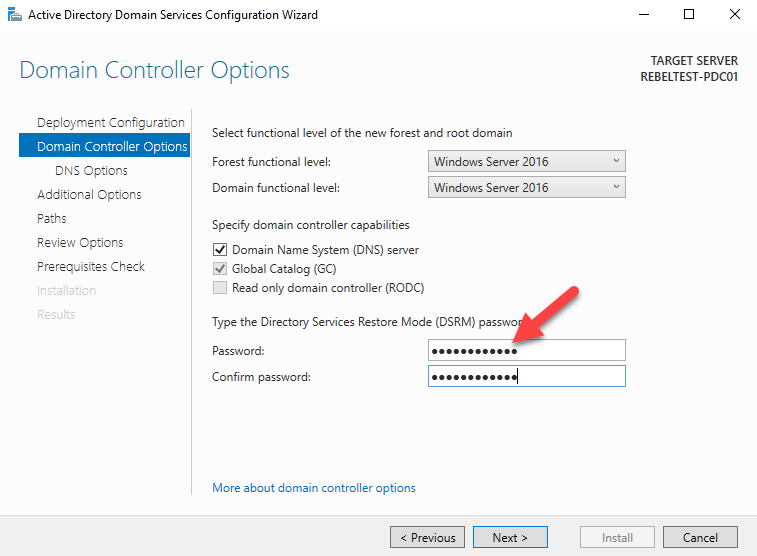
15) For the DNS options, this going to be the first DNS server in new forest. So no need any modifications. Click next to proceed.
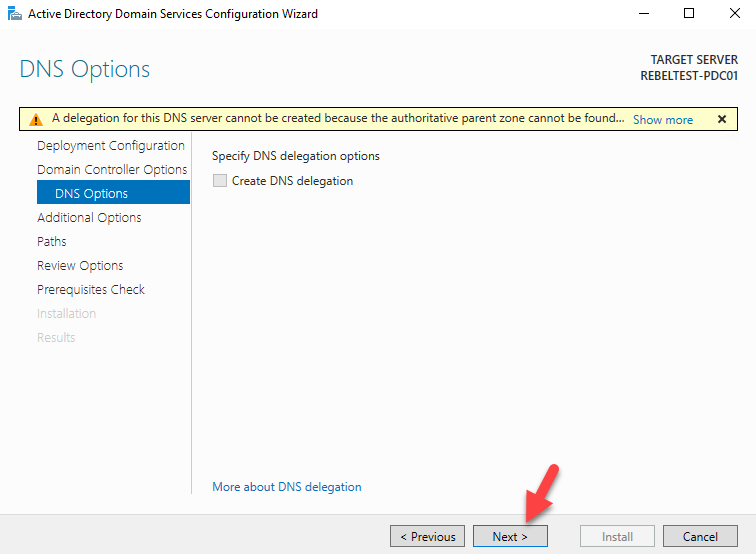
16) For the NETBIOS name keep the default and click next
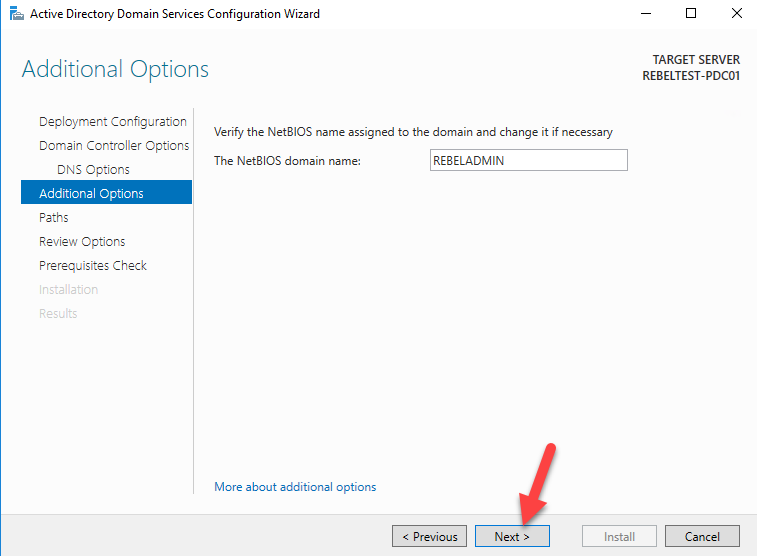
17) Next page is to define the NTDS, SYSVOL and LOG file folders. You can keep default or define different path for these. In demo I will be keeping default. Once changes are done, click next to continue
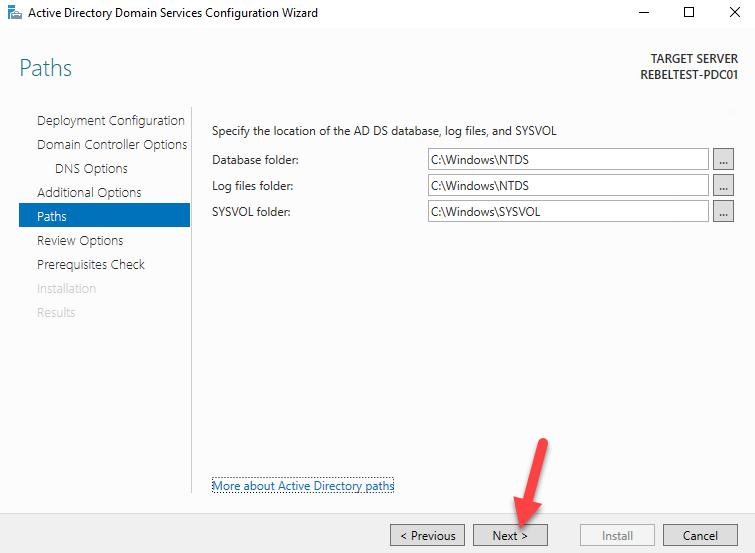
18) Next page will give option to review the configuration changes. If everything okay you can click next to proceed or otherwise can go back and change the settings.
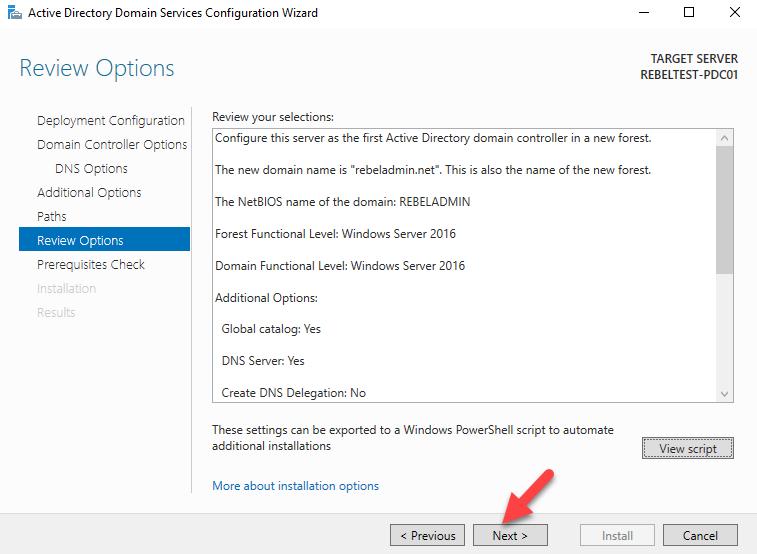
19) In next windows it will do prerequisite check. If it’s all good it will enable option to install. Click on install to begin installation process.
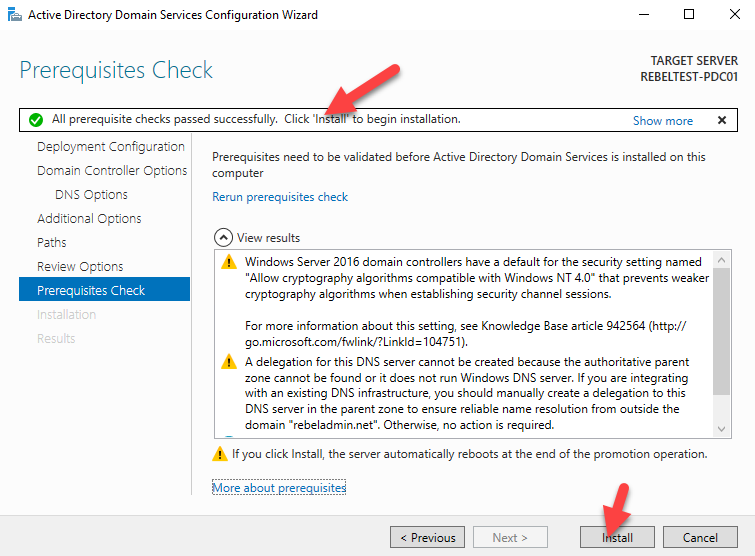
20) Then it will start the installation process.

21) After the installation system will restart automatically. Once it comes back log in to the server as domain admin.
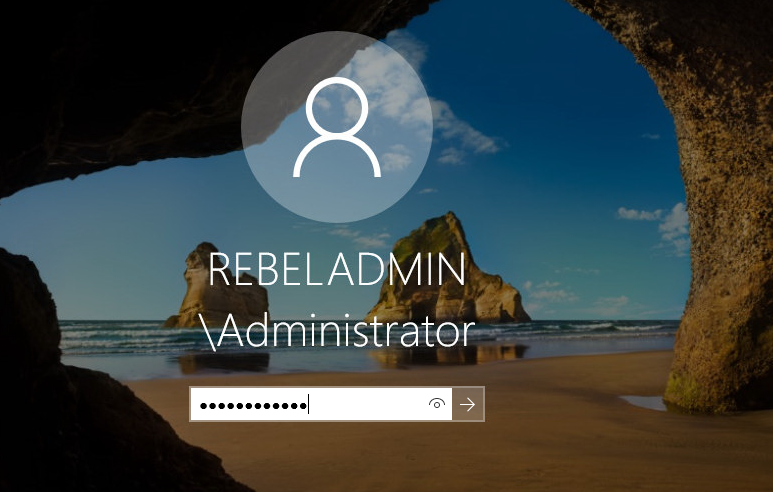
22) Once log in open the powershell (as administrator) and type dsac.exe and press enter. It will open up the active directory administrative center. There you can start managing the resources.

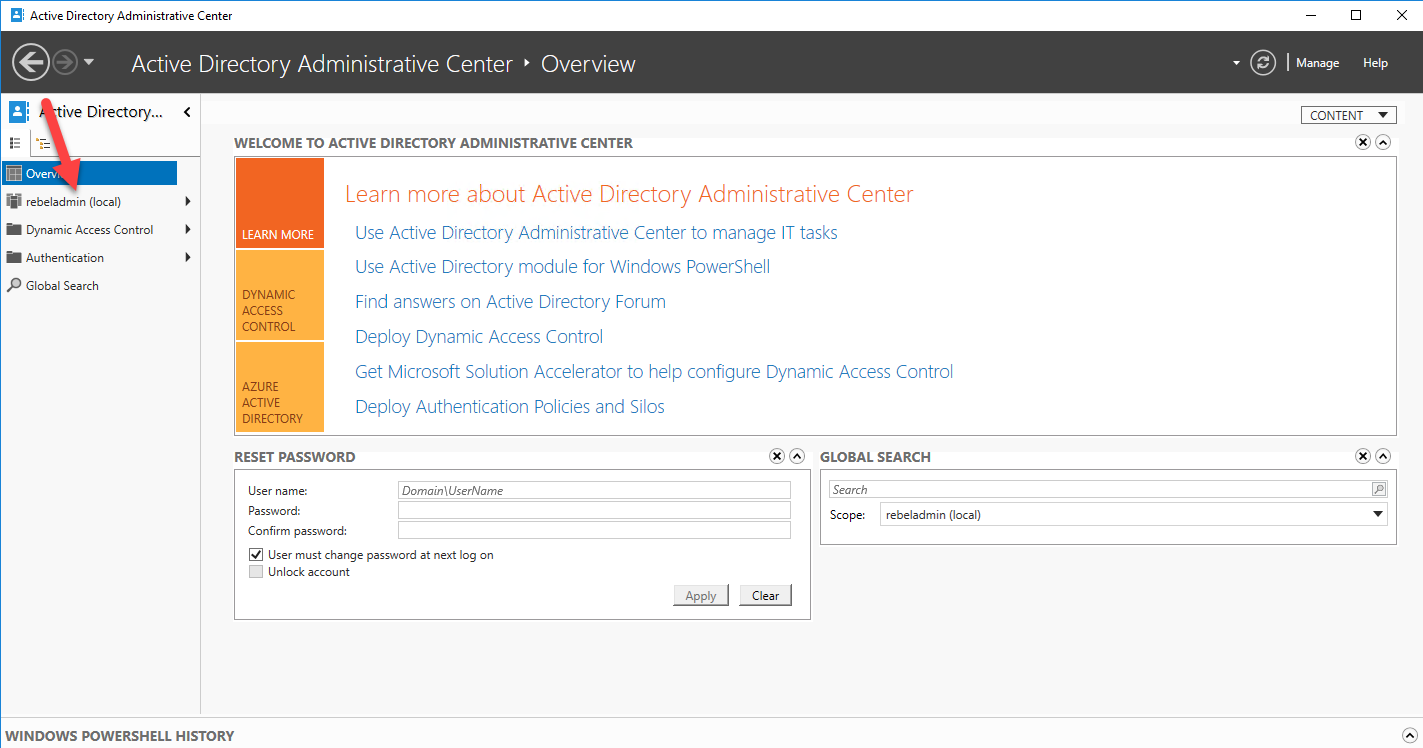
23) Also you can use Get-ADDomain | fl Name,DomainMode and Get-ADForest | fl Name,ForestMode from powershell to confirm domain and forest functional levels

Refer: https://blogs.technet.microsoft.com/canitpro/2017/02/22/step-by-step-setting-up-active-directory-in-windows-server-2016/
Step-By-Step: Setting up Active Directory in Windows Server 2016的更多相关文章
- How to setup Active Directory (AD) In Windows Server 2016
Windows Server 2016 is the newest server operating system released by Microsoft in October 12th, 201 ...
- Prepare and Deploy Windows Server 2016 Active Directory Federation Services
https://docs.microsoft.com/en-us/windows/security/identity-protection/hello-for-business/hello-key-t ...
- Active Directory Domain Services in Windows Server 2016/2012
Applies To: Windows Server 2016, Windows Server 2012 R2, Windows Server 2012 You will find links to ...
- Windows Azure Active Directory (2) Windows Azure AD基础
<Windows Azure Platform 系列文章目录> Windows Azure AD (WAAD)是Windows Azure提供的一个REST风格的服务,为您的云服务提供了身 ...
- Windows Server 2016 Active Directory 图文搭建指南
1. 首先打开Manage --> Add Roles and Features 2. 点击Next 3. 不做修改,点击Next 4. 不做修改,点击Next 5. 选择Active Dire ...
- Windows Azure Active Directory (3) China Azure AD增加新用户
<Windows Azure Platform 系列文章目录> 本文介绍的是国内由世纪互联运维的China Azure. 本文是对笔者之前的文档:Windows Azure Active ...
- Windows Server 2016-WinSer2016 Active Directory新增功能
Windows Server 2016 Active Directory 域服务 (AD DS)新增很多功能用来提升Active Directory域及组织环境安全等,并帮助他们面向云的部署或混合部署 ...
- 滥用基于资源约束委派来攻击Active Directory
0x00 前言 早在2018年3月前,我就开始了一场毫无意义的争论,以证明TrustedToAuthForDelegation属性是无意义的,并且可以在没有该属性的情况下实现“协议转换”.我相信,只要 ...
- [Windows Azure] What is Windows Azure Active Directory?
What is Windows Azure Active Directory? Windows Azure Active Directory is a service that provides id ...
随机推荐
- 配置vue-yarm-PM2工具环境
步骤: 第一步:安装yarn 参考网址:https://yarn.bootcss.com/docs/install.html#linux-tab a.用pm2启动已创建的server.js #pm ...
- (数据科学学习手札17)线性判别分析的原理简介&Python与R实现
之前数篇博客我们比较了几种具有代表性的聚类算法,但现实工作中,最多的问题是分类与定性预测,即通过基于已标注类型的数据的各显著特征值,通过大量样本训练出的模型,来对新出现的样本进行分类,这也是机器学习中 ...
- 小米Pro 15.6 系统重装记录
参考链接:http://bbs.xiaomi.cn/t-14321262,主要是miui论坛和小米社区的一位同学的教程,. 这位同学是针对12.5和13.3的版本做的教程,15.6和之前的版本有一小点 ...
- shell重温---基础篇(shell数组&数组操作)
上篇博客已经分析重温了shell的运行方式以及其中的变量还有字符串,之后按照套路就是数组方面了,废话不多说,直接进入正题哈.(小白笔记,各位看官勿喷...) bash shell呢,支持一位数 ...
- 解析车辆VIN码识别(车架号识别)系统
很多人在购买车辆的时候,只关注性能.外观.内饰等,其实真正的内行是首先看车辆的VIN码,也叫车架号码. VIN码(车架号码)是一辆车的唯一身份证明,一般在车辆的挡风玻璃处,有的在车辆防火墙上,或B柱铭 ...
- 14.0 native webview H5切换
在讲这章之前先说明一个问题,那就是 native webview 都是属于原生的...webview目前用的比较多的是谷歌内核和腾讯X5内核 H5是网页! 还是安卓市场---直接写好脚本进入个人中心 ...
- 2016弱校联盟十一专场10.3 We don't wanna work!
能把 not working now 写成 not working hard now 还查一晚上也是没谁了 我的做法是维护两个set 分别是前20% 和后80% #include<iostrea ...
- sqlserver查询数据库中有多少个表,多少视图,多少存储过程,或其他对象
sql server 数表: select count(1) from sysobjects where xtype='U' 数视图: select count(1) from sysobjects ...
- 给Python初学者的一些编程建议
Python是一种非常富有表现力的语言.它为我们提供了一个庞大的标准库和许多内置模块,帮助我们快速完成工作.然而,许多人可能会迷失在它提供的功能中,不能充分利用标准库,过度重视单行脚本,以及误解Pyt ...
- lintcode-99-重排链表
99-重排链表 给定一个单链表L: L0→L1→-→Ln-1→Ln, 重新排列后为:L0→Ln→L1→Ln-1→L2→Ln-2→- 必须在不改变节点值的情况下进行原地操作. 样例 给出链表 1-> ...
